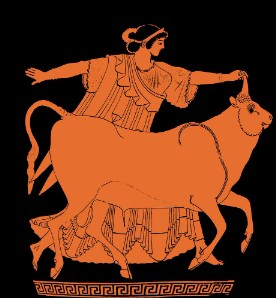Crete, the largest island in Greece, is a land steeped in myth and legend. The cradle of one of Europe’s earliest civilizations, the Minoans, Crete has long been associated with a rich tapestry of myths involving gods, goddesses, and ancient tales. These stories have fascinated scholars and travelers for centuries, offering a window into the religious and cultural life of ancient Crete. This guide delves into some of the most compelling myths and legendary figures from Cretan mythology, revealing the island’s profound influence on Greek mythology and beyond.
The Birthplace of Zeus
One of the most famous myths associated with Crete is the birth of Zeus, the king of the gods. According to legend, Zeus was born in a cave on Mount Ida (also known as Psiloritis), the highest peak in Crete. His mother, Rhea, fled to Crete to escape her husband, Cronus, who had a habit of swallowing his offspring to prevent them from usurping his power. Rhea gave birth to Zeus in the Dikteon Cave, also known as the Cave of Psychro, and hid him there to protect him from Cronus. Raised by nymphs and fed by the goat Amalthea, Zeus eventually grew strong enough to overthrow his father and become the ruler of the gods.
The Labyrinth and the Minotaur
Another iconic Cretan myth is the story of the Minotaur and the labyrinth. King Minos of Crete, wanting to demonstrate his power, prayed to Poseidon for a sign. Poseidon sent a magnificent white bull, which Minos was supposed to sacrifice. However, Minos kept the bull, angering the god. As punishment, Poseidon made Minos’s wife, Pasiphae, fall in love with the bull. From their union, the Minotaur, a creature with the body of a man and the head of a bull, was born.
Minos ordered the architect Daedalus to build an elaborate labyrinth to contain the Minotaur. This labyrinth was so complex that no one could escape it. The myth tells of Theseus, a hero from Athens, who volunteered to enter the labyrinth and slay the Minotaur. With the help of Minos’s daughter, Ariadne, who gave him a ball of thread to navigate the labyrinth, Theseus killed the Minotaur and escaped, freeing Athens from the tribute it had to pay to Crete.
Europa and the Bull
The myth of Europa also has its roots in Crete. Europa was a Phoenician princess who caught the eye of Zeus. To seduce her, Zeus transformed himself into a beautiful white bull and mingled with her father’s herd. Enchanted by the bull’s gentle nature, Europa climbed onto its back. Zeus then swam across the sea to Crete with Europa, where he revealed his true identity. Europa became the first queen of Crete and bore Zeus three sons, including Minos, who would become the legendary king associated with many of Crete’s myths.
Daedalus and Icarus
The story of Daedalus and Icarus is another famous myth connected to Crete. Daedalus, a brilliant inventor, and his son Icarus were imprisoned by King Minos in a tower to prevent them from sharing the secret of the labyrinth. To escape, Daedalus fashioned wings made of feathers and wax for himself and Icarus. Before their flight, Daedalus warned his son not to fly too close to the sun or the sea. However, overcome with the exhilaration of flight, Icarus ignored his father’s warnings, flew too close to the sun, and fell into the sea when the wax melted. This myth serves as a timeless cautionary tale about hubris and the perils of over-ambition.
Talos: The Bronze Guardian
Talos, the giant bronze automaton, is another fascinating figure from Cretan mythology. According to legend, Talos was created by Hephaestus, the god of fire and metalworking, and was given to Minos to protect Crete. Talos patrolled the island’s shores, throwing rocks at approaching ships to deter invaders. He circled Crete three times a day, and his only vulnerability was a single vein running from his neck to his ankle, sealed with a bronze nail. In one version of the myth, the sorceress Medea defeated Talos by removing this nail, causing him to bleed out his life force, known as ichor.
The Role of the Goddess
Goddesses played a central role in Cretan mythology, reflecting the Minoan civilization’s reverence for female deities. One of the most significant figures is the Snake Goddess, often depicted holding snakes in both hands. She symbolizes fertility, renewal, and the protection of the home. Another important figure is Britomartis, the goddess of mountains and hunting, who was revered as a protector of nature and wildlife.
Conclusion
Cretan mythology offers a captivating glimpse into the ancient world, where gods and goddesses, heroes and monsters, all played roles in explaining the mysteries of existence and human nature. These myths, steeped in the natural beauty and historical depth of Crete, continue to inspire and intrigue. Whether exploring the caves of Mount Ida, wandering the ruins of Knossos, or simply immersing oneself in the rich storytelling tradition of the island, discovering Cretan mythology is a journey into the heart of one of humanity’s most enduring cultural legacies.


